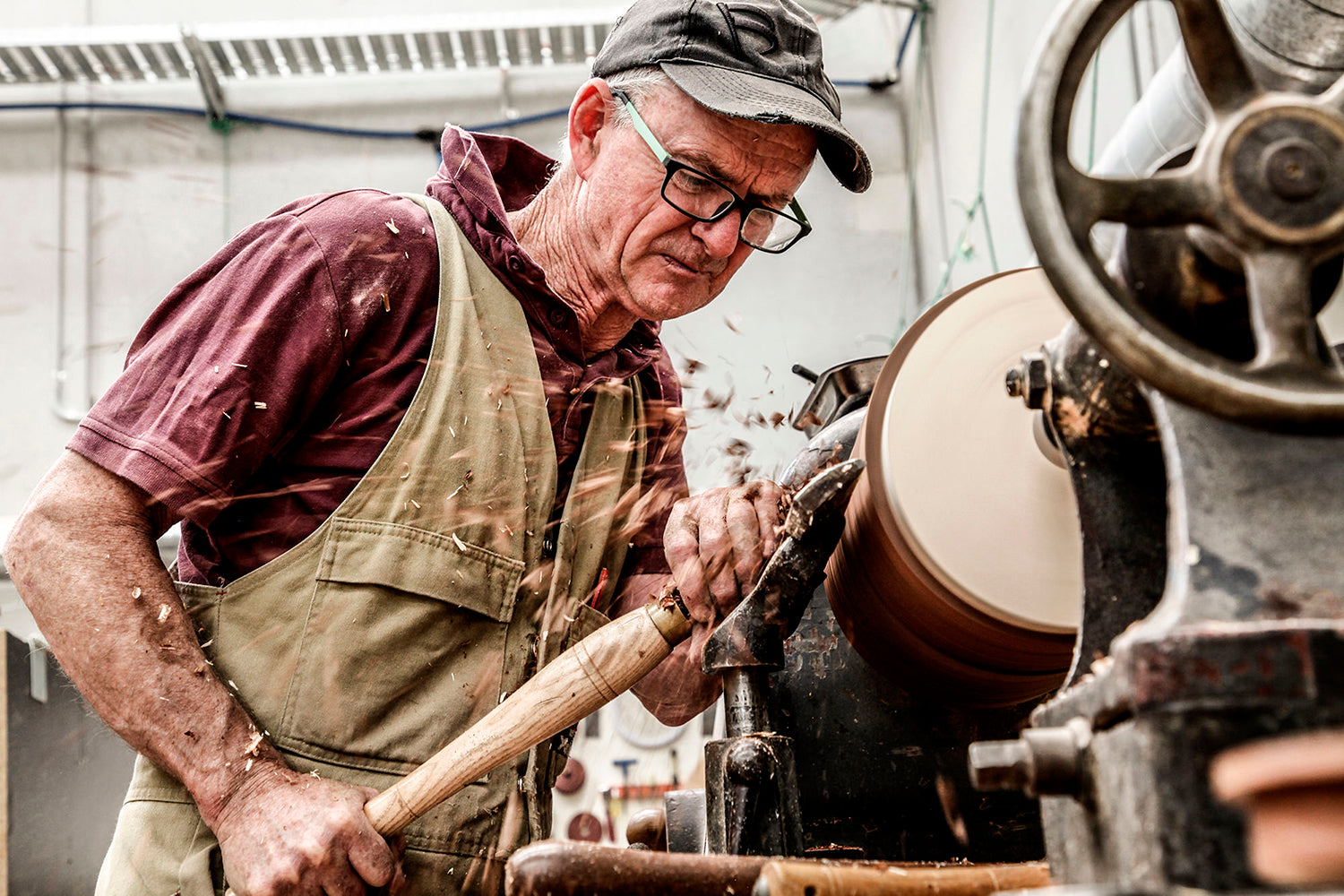
Charlie, you’ve been running your business for a long time now! Can you tell us a little bit about what it looked like when you started out and how it has grown?
I started out as a one man show at the Darebin Enterprise Centre – a business incubator set up by the Darebin Council. I provided customers with a bespoke joinery/woodturning service and was there for 7 years. During that time I employed several craftspeople, apprentices and office staff to help me cope with ever expanding demand. Eventually I was able to get a loan to buy the premises we currently occupy in Preston on the bank of the beautiful Darebin creek.

Your specialty has always been woodturning which is such a beautiful process. What drew you to woodturning to begin with?
My entry into woodwork was somewhat accidental. I took a job at Wallaby Woodware in West Heidelberg which was very close to La Trobe university where I was a student. I ended up staying there about a year. The owner Doug Anderson did some hand turning and from the first time I saw it I was hooked. After I left that job, I bought a cheap secondhand homemade lathe and basically taught myself to do it. I used to make my own chisels from old files. I travelled to London and bluffed my way into a woodturning job at a large factory doing piece work. I got very competent very quickly and did an enormous variety of work.

You and your staff have been hand turning our Coco pendant timbers for ten years now and we know that a lot of work goes into each one. Can you tell us about the processes involved in creating each piece and what challenges they present?
The Coco pendants are made of layers of glued together timber that is then hand turned. First the underside and then the outside with a step to locate the metal shade. They are finished with an oil / wax we make from linseed oil and beeswax, by burnishing while spinning on the lathe.

Your business is well known for its craftsmanship and many pieces are still made by hand. However, you’ve also embraced advances in technology as it has evolved in the industry. How do you combine both aspects in your practice and do you think there will always be a place for handcrafting timber?
These days we employ approximately 35 staff and make high end furniture, built-in joinery, componentry, staircases and even sculpture. We were lucky enough to purchase McKay Joinery – fantastic door and window makers since 1948, when the owners retired over 5 years ago.
We have our own polishing / paint shop so we can control the quality of our products from start to finish. We have all the traditional hand skills such as woodturning, hand carving, french polishing and veneering and heritage work is an important aspect of our work mix. Over the last 3 years we have invested heavily in CNC (computer numerically controlled) equipment and software and it’s been a steep learning curve but we have been producing amazing work, much of it in 3D. We are excited by the technological advances being made and are making things now that are impossible to make the traditional way.
There are so many sustainability practices that you need to be conscious of in timber production and we’ve always appreciated your knowledge and advise in this area. Can you tell us a bit about how you minimise the environmental impact of your business?
The sustainability of our business is extremely important to us. Fortunately we are in the City of Darebin and the council is very encouraging and supporting in that direction. They ran a 'greening your business' course which I attended. It was very enlightening and we now recycle all our organic waste, recycle packaging and use recycled local hessian bags from Mocopan Coffee as a substitute for bubble wrap.
We have invested heavily in solar panels, again with the help of the council, and now have the maximum amount allowable in solar generation in an effort to reduce our carbon footprint. The power we do use from the grid is all from renewables. We donate yearly to Greening Australia and Bush Heritage Australia to put something back to the environment for our use of forest product. We have decided to move away from use of our local hardwood as quickly as possible because of our concerns over sustainability. We are in the process of replacing it and have invested in large stocks of American oak for that purpose.

I know you’re a man of many talents – what are some of your passions outside of work?
Away from work my hobby is music. I play fiddle and Cajun accordion and perform in a band playing traditional American Old Time and Cajun music.

Charlie Sandford and his team produce the timber components for both our Coco and Honey lighting collections.
Learn more about Charles Sandford here
Image credits
Portrait by Julian Kingma
Workshop images by Fran Parker